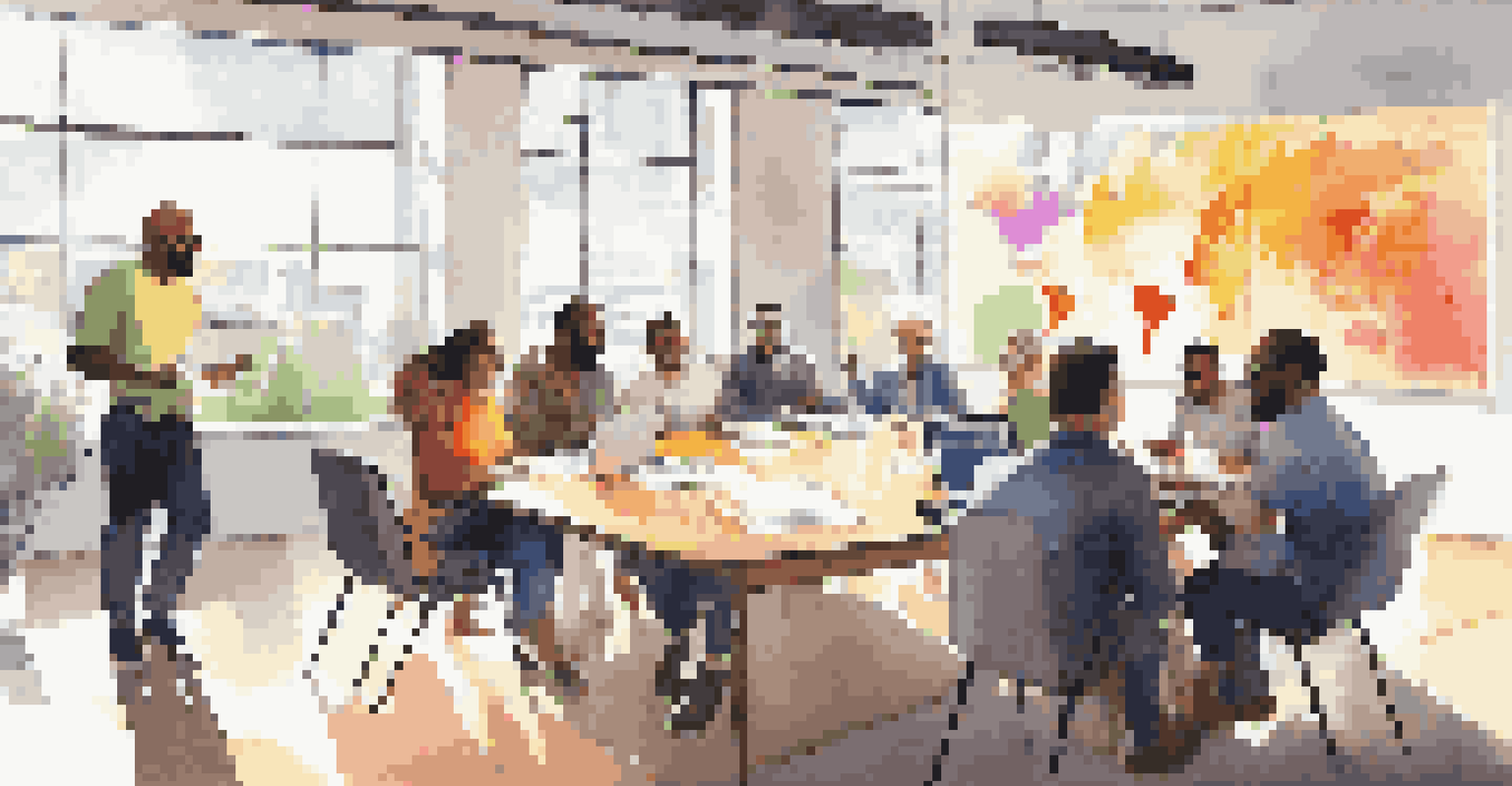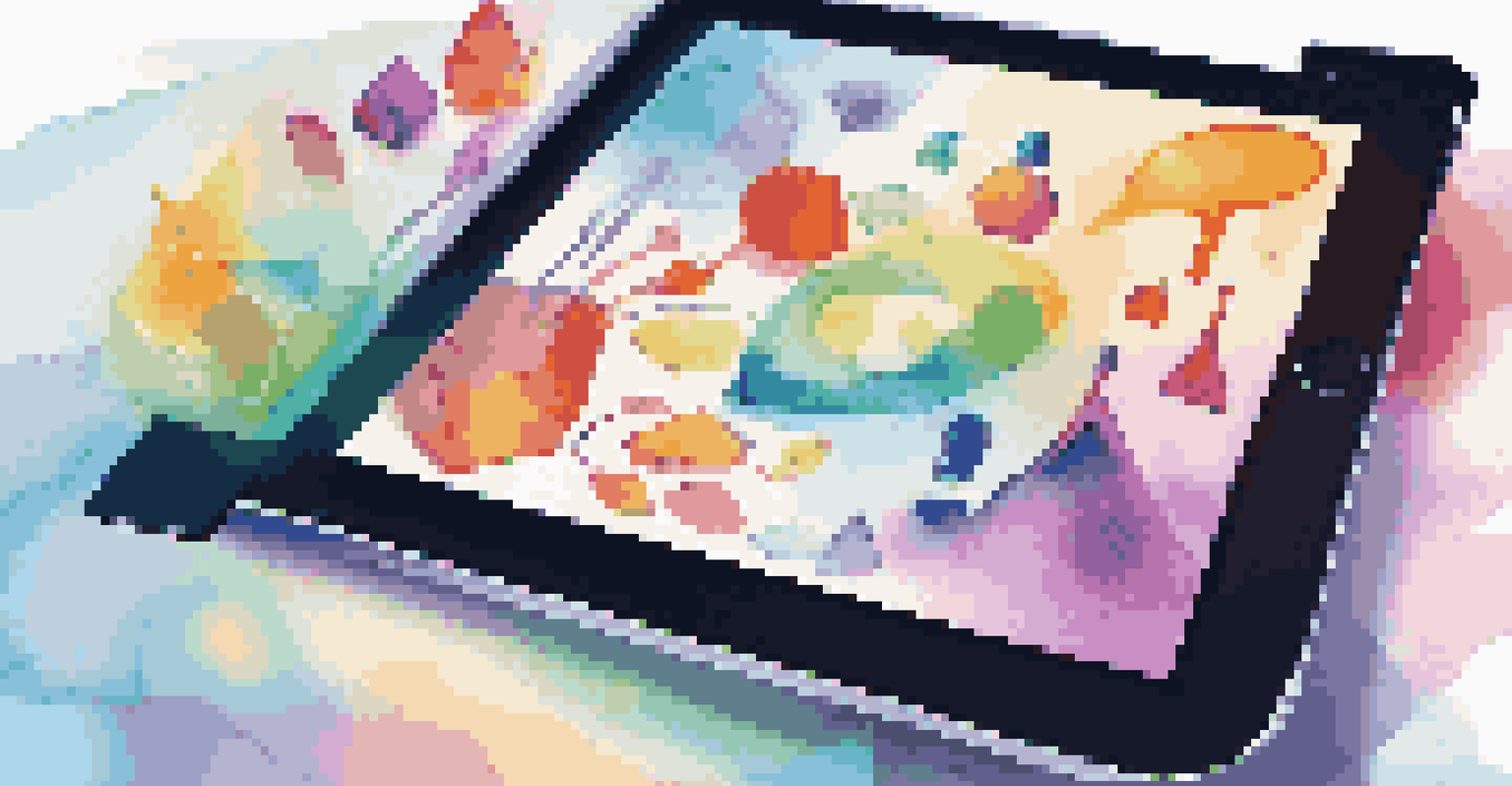Microlearning for Enhancing Creative Problem-Solving Skills

Understanding Microlearning and Its Benefits
Microlearning is a bite-sized learning approach that focuses on delivering content in short, digestible segments. This method allows learners to engage with material at their own pace, making it easier to absorb and retain information. By breaking complex topics into smaller pieces, microlearning caters to our busy lifestyles, enabling us to learn in just a few minutes a day.
Learning is not the product of teaching. Learning is the product of the activity of learners.
The benefits of microlearning extend beyond convenience. It also promotes better retention of information, as learners can revisit content as needed. This is especially important in creative problem-solving, where having a toolkit of ideas and techniques readily accessible can make a significant difference when faced with challenges.
Additionally, microlearning allows for the incorporation of various formats—videos, quizzes, and infographics—making the learning experience more engaging. This variety keeps the learner's attention and encourages exploration, which is crucial for sparking creativity and innovative thinking.
The Role of Creativity in Problem-Solving
Creativity is often seen as a key component of effective problem-solving. It involves thinking outside the box and generating novel ideas that can lead to innovative solutions. In today's fast-paced world, the ability to approach problems creatively is more valuable than ever, as it can set individuals apart in both personal and professional arenas.

Creative problem-solving isn't just about being artistic; it requires a mindset that embraces experimentation and risk-taking. This is where microlearning can play a pivotal role, as it encourages learners to explore diverse perspectives and methods for tackling challenges. By continuously engaging with new content, individuals can expand their creative horizons.
Microlearning Enhances Retention
By delivering content in short, digestible segments, microlearning promotes better retention and allows learners to revisit material as needed.
Furthermore, fostering creativity through microlearning can help reduce the fear of failure. When learners are presented with small, manageable tasks, they are more likely to experiment and take risks, ultimately leading to greater innovation. This shift in mindset is essential for developing strong creative problem-solving skills.
Microlearning Techniques for Creative Problem-Solving
There are several effective microlearning techniques that can enhance creative problem-solving skills. One popular method is scenario-based learning, where learners are presented with real-world challenges and tasked with developing solutions. This approach not only engages learners but also allows them to apply their creativity in practical contexts.
Creativity is intelligence having fun.
Another technique is gamification, which incorporates game-like elements into the learning process. By creating a fun and interactive environment, learners are encouraged to think creatively and collaborate with others. Gamified microlearning can stimulate competition and motivation, further enhancing problem-solving capabilities.
Lastly, leveraging social learning platforms can foster collaboration and idea-sharing among learners. By connecting with peers, individuals can gain new insights and inspiration, which are essential for creative thinking. These platforms allow for the exchange of ideas in real-time, making learning a communal experience.
Measuring the Impact of Microlearning on Creativity
To understand the effectiveness of microlearning in enhancing creative problem-solving, it’s crucial to measure its impact. This can be done through assessments that evaluate both knowledge retention and the application of creative skills. By tracking progress, organizations can identify which microlearning strategies yield the best results.
Surveys and feedback can also provide valuable insights into how learners perceive their creative growth. Asking participants about their confidence in problem-solving and their willingness to experiment can help gauge the success of microlearning initiatives. This qualitative data complements quantitative metrics, offering a well-rounded view of impact.
Creativity Boosts Problem-Solving
Fostering creativity through microlearning encourages innovative thinking and helps individuals approach challenges with a fresh perspective.
Additionally, observing changes in workplace performance can serve as an indicator of the benefits of microlearning. When employees demonstrate improved creativity and problem-solving skills, organizations can assess the value of their training programs and make necessary adjustments to optimize learning outcomes.
Creating a Microlearning Strategy for Teams
Developing a successful microlearning strategy for enhancing creativity in problem-solving requires careful planning. First, it’s important to identify the specific skills or knowledge gaps within the team. By understanding the areas that need improvement, organizations can tailor their microlearning content to address these needs effectively.
Next, incorporating a variety of learning formats can cater to different learning styles. Some team members may prefer visual content, while others might benefit more from interactive quizzes or group discussions. By diversifying the types of microlearning resources available, you can ensure that all team members remain engaged and motivated.
Lastly, it's essential to create a culture of continuous learning. Encouraging team members to share their insights and experiences can foster an environment where creativity thrives. When individuals feel supported in their learning journey, they are more likely to take risks and approach problem-solving with a fresh perspective.
Overcoming Challenges in Microlearning Implementation
While microlearning offers numerous benefits, it’s not without its challenges. One common issue is ensuring that the content remains relevant and engaging. If learners find the material outdated or uninteresting, they may disengage, negating the potential benefits of microlearning for creativity.
Another challenge is the varying levels of technology proficiency among learners. Not everyone may be comfortable with digital learning platforms, which can create barriers to access. To address this, organizations should provide adequate training and support to ensure that all team members can effectively utilize microlearning tools.
Diverse Techniques Drive Engagement
Incorporating various formats and methods in microlearning keeps learners engaged and motivated, which is essential for effective problem-solving.
Finally, measuring the success of microlearning initiatives can be complex. Organizations need to establish clear metrics and methods for assessing impact on creativity and problem-solving. By setting realistic expectations and consistently reviewing outcomes, teams can refine their approaches and maximize the effectiveness of their learning programs.
The Future of Microlearning in Creative Problem-Solving
As technology continues to evolve, the future of microlearning looks promising, especially in the realm of creative problem-solving. Advances in artificial intelligence and data analytics will enable personalized learning experiences tailored to individual needs. This customization can enhance engagement and improve outcomes for learners.
Moreover, the rise of virtual and augmented reality presents new opportunities for immersive microlearning experiences. Imagine being able to simulate real-world problem-solving scenarios in a virtual environment, allowing learners to practice their skills in a safe yet realistic setting. Such innovations could redefine how creativity is fostered in problem-solving contexts.

Ultimately, the integration of microlearning into creative problem-solving strategies can lead to a more agile workforce. By continuously learning and adapting, individuals can better navigate challenges and drive innovation in their organizations. As we look to the future, embracing these learning methods will be crucial for developing the creative thinkers of tomorrow.